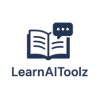Sales automation tools help sales teams automate repetitive tasks like lead capture, follow-ups, outreach, and pipeline management so reps can focus on selling. By combining CRM, email sequencing, AI lead scoring, and engagement analytics, these platforms increase efficiency, shorten sales cycles, and improve conversion rates.
In this guide you’ll find top sales automation tools, how they compare, and practical tips and FAQs to pick the right solution for your team.
Overview: Top Sales Automation Tools
Sales automation platforms automate routine sales activities lead enrichment, email sequences, meeting scheduling, activity logging, and forecasting while offering analytics and AI-driven recommendations. Choose a tool based on team size, sales motion (B2B vs B2C), required integrations, and budget.
Sales Automation Tools Explained
HubSpot Sales Hub
Best for: Growing teams that want an integrated CRM and sales automation suite.
HubSpot Sales Hub automates email sequences, meeting scheduling, pipeline updates, and offers built-in reporting and contact tracking. It’s tightly integrated with HubSpot CRM and marketing tools.
Salesforce Sales Cloud
Best for: Enterprises needing advanced customization and integrations.
Salesforce provides robust workflow automation, AI-driven lead scoring (Einstein), forecasting, and extensive ecosystem apps for complex sales processes.
Pipedrive
Best for: Small to medium teams that prefer visual pipeline management.
Pipedrive offers easy-to-configure automation for follow-ups, deal stages, and email tracking with a highly visual pipeline and numerous integrations.
Outreach
Best for: Sales engagement and multi-channel outreach.
Outreach automates sequences across email, calls, and social touchpoints, provides cadence optimization, and tracks engagement metrics for B2B teams.
Salesloft
Best for: Enterprise sales engagement and analytics.
Salesloft focuses on cadences, coaching, conversation intelligence, and deep CRM integrations to help sales teams scale outreach effectively.
Freshsales (Freshworks)
Best for: SMBs seeking AI insights and easy setup.
Freshsales includes AI-based lead scoring, built-in phone, email sequences, and workflow automation at an affordable entry price.
Zoho CRM
Best for: Budget-conscious teams needing broad feature coverage.
Zoho CRM automates lead assignment, workflows, and follow-ups and integrates with Zoho’s suite for marketing and service automation.
Reply.io
Best for: Scalable outbound outreach.
Reply automates cold email sequences, follow-ups, and integrates with CRMs to sync engagement data and outcomes.
Tool Comparison: Which Sales Automation Tool Fits You?
| Tool | Best For | Core Features | Price | Ease of Use |
|---|---|---|---|---|
| HubSpot Sales Hub | Integrated CRM & sales | Email sequences, meetings, pipeline, reporting | Free & Paid Plans | Very Easy |
| Salesforce Sales Cloud | Enterprise customization | Workflow automation, AI scoring, forecasting | Paid (Enterprise) | Moderate–Advanced |
| Pipedrive | Visual pipelines | Deal automation, email tracking, integrations | $14.90+/mo | Very Easy |
| Outreach | Sales engagement | Cadences, multi-channel sequences, analytics | Custom Pricing | Moderate |
| Salesloft | Enterprise engagement | Cadences, conversation intelligence, coaching | Custom Pricing | Moderate–Advanced |
| Freshsales | SMBs, AI insights | Lead scoring, email sequences, phone | $15+/mo | Easy |
| Zoho CRM | Budget teams | Lead workflows, automation, Zoho ecosystem | $12+/mo | Easy |
| Reply.io | Outbound scaling | Email cadences, analytics, CRM sync | $70+/mo | Easy–Moderate |
How to Use Sales Automation Tools Effectively
- Define your sales process and map automation to specific stages (lead capture → nurture → qualification → close).
- Use lead scoring to prioritize outreach and focus reps on high-potential leads.
- Automate follow-ups and meeting scheduling, but personalize key messaging for high-value prospects.
- Integrate your automation tool with CRM, marketing, and support systems to keep data synchronized.
- Measure outcomes—response rate, conversion rate, time-to-close—and iterate cadences and workflows.
- Train reps on using automation responsibly use it to augment, not replace, human selling.
FAQs – Sales Automation Tools
1: Will sales automation replace salespeople?
A: No. Automation handles repetitive tasks and scales outreach, but human relationship-building and negotiation remain essential for closing deals.
2: Which tool is best for small sales teams?
A: Pipedrive and Freshsales are excellent for small teams due to low cost, ease of setup, and visual workflows.
Q: Do sales automation tools work with existing CRMs?
A: Most tools provide native integrations or APIs to sync with CRMs like Salesforce, HubSpot, and Zoho to keep records up to date.
Q: How do I measure ROI from sales automation?
A: Track metrics like qualified leads per rep, conversion rate, time-to-close, average deal size, and time saved on manual tasks to calculate ROI.
Q: Are sales automation tools secure?
A: Reputable vendors follow security best practices (encryption, role-based access, SOC/ISO compliance). Always review vendor security documentation before adoption.
Final Thoughts
Choosing the right sales automation tool depends on team size, sales motion, budget, and desired integrations. HubSpot and Salesforce serve broad needs at different scales; Pipedrive and Freshsales suit smaller teams; Outreach and Salesloft excel at engagement cadences; Reply.io is strong for outbound scaling. Pair automation with strong sales processes and human-led personalization to maximize productivity and revenue growth.
